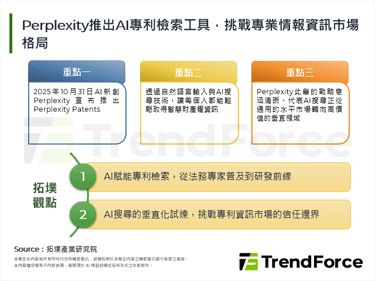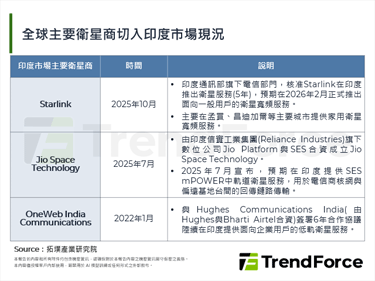Light at the end of Tunnel in Sight for Panel Industry in 2010
2009 is a year to remember for panel plants worldwide. Starting the end of 2008, panel prices have fast fallen to total cost, forcing panel plants to reduce production to achieve supply-demand balance in 1H09, a rarity in sectoral history. As the reduction in production took effect and Chinese government dished out policy stimuli in the form of subsidies to rural and urban consumption of household appliances, panel plants had turn profitable in 3Q09.

For 2009 full-year, large-size panel shipments worldwide are en route to grow 17.1% YoY. But affected by weakness in panel prices, global production value of large-size panels shrank for the first time ever, set to contract 10.1% YoY. For 2010, Jonathan Luo, Speical Assistant to Board Chairman of Topology Research Institute, points out that as global economy regains strength, market demand will resume to help global large-scale panel shipments to grow 18.7% YoY to 573mn pieces, including NB panel demand of up to 200mn pieces, up 25% YoY, and TV panel demand of up to 171mn pieces, up 20.5%. Such strong recovery should help the panel industry revisit the glory last seen in 2008.

Driven by new products/technologies, panel demand heats up
As large-scale panel demand picks up, NB and TV will act as two main engines behind global panel production value growth in 2010. With the launch of Windows 7, NB brandname vendors have rolled out new models of Netbook and CULV NB that use LED as backlight for their panels. As such, we expect LED NB to penetrate 95% of the overall NB market, practically taking over the entire NB market to help NB panel market grow exponentially. Topology Research Institute estimates that in 2010, global NB panel shipments will amount to 200mn pieces, up 25% YoY. TV panel, too, is set to go on fast-lane growth, especially in emergin countries where flat panel TV has become price-wise accessible enough for consumers to want to replace their CRT TV with it. Promotion of digital TV by govenrments in these countries also helps. As such, in 2010, TV panel demand will run up to 171mn pieces, up 20.5% YoY. In 2010, TV panels will grow in dimensions to average 0.7 inch bigger YoY. In addition, with new application products coming along, such as LED products, 3D devices, and ePaper, the new era of panels is set to begin.
2010 to be a year of stable supply/demand as panel plants and glass plants alike showcase discipline with production control
On the supply side, global economic downturn has resulted in decreased capex by panel plants in 2009, which should lead to much less additons to capacity in 2010. As such, for 2010 full-year, global panel supply should grow 18.8% YoY. This can’t compare to growth of 30%-strong in 2008 and 2009, but notwithstanding, panel overcapacity will remain to make it necessary for panel and glass plants to resort to production reductions and other methods to keep panel supply at bay, thereby toning down inventory risks that might derive from excessive expansion. The continued upscaling of panel dimensions will also help digest panel plant capacity. Given 2010 quarterly supply/demand projections, we expect the panel industry to feature cyclical changes as the first quarter will be the slow season, when production cuts will serve to maintain supply-demand balance. The second quarter will see demand pick up to peak in 3Q10 when there will be a short supply, and then in 4Q10, the market will be revisited by weak seaonality. Overall in 2010, global panel supply/demand will lean toward greater stability.
China has emerged as a regional market that no major plants can afford to miss out on
Among fast-growing emerging markets, China stands out as the world’s most important LCD TV production base, accounting for nearly half of global LCD TV output. China imports most of the panels it needs, as in 2008, China was nearly 100% reliant on import of TV panels, 95% so on import of NB panels, and 37% monitor panels. This means that in terms of panel demand, China has practically become the world’s largest market. And with Chinese panel market coming of age, panel plants from Japan, Korea, and Taiwan have swarmed there to set up TFT-LCD production bases to be near the market and to lower cost. Local Chinese panel plants, too, have been active with set-up of new production lines. For a glimpse of deployment by major players, Corwin Lee, Researcher of Topology Research Institute, thinks that top three panel plants in the world, namely Samsung, LGD, and AUO, are getting similar to one another in panel output breakdown. That is, they all gravitate toward a NB-Monitor-TV ratio of 4-3-3. This ensures them of stable earnings and lower cost from more time running on full-capacity. Among other players, Sharp (Japan) focuses on high-margin TV panels, while BOE and IVO from China remain concentrated on Monitor panels.
In the meantime, as global TV panel demand picks up, many players across the globe are increasing their shipment exposure to TV panels. In Japan, as one, TV panel is moving toward center of stage, while in Korea, NB panel is relinquishing its place to products with higher gross margin, such as TV panel, to conform to world market. Besides, encouraged by brisk Netbook shipments, Taiwan has seen gradual rise in its shipment exposure to NB panels. China, too, has borne witness to improvement in NB and TV panel technologies. What can be foreseen is that foreign capital and Taiwanese players will join hands in making inroads into China, in the process rendering panel market competition even more white-hot. The key to being triumphant is staying on top of supply, demand, and pricing.






